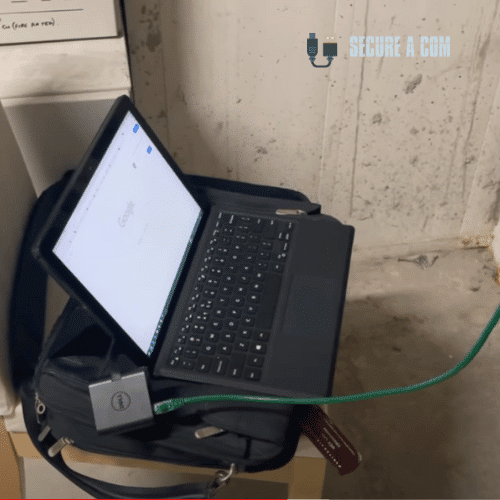Resolving Fluctuating NBN Speeds in a Duplex with FTTP
Background
We were called out to assist a customer experiencing significant speed fluctuations and dropouts on her NBN Fibre to the Premises (FTTP) service. The customer, connected through Optus, had been dealing with inconsistent internet speeds since her service was connected. This situation was further complicated by her unique property setup—a duplex with a neighbouring address that no longer has NBN service.
The customer had attempted to resolve the issue through Optus, who conducted remote tests and replaced the router twice. However, the problem persisted, with speed inconsistencies occurring frequently throughout the day. Optus attributed the fault to the internal cabling, but the customer was not convinced and contacted us to conduct an independent assessment.
Investigation
On-Site Assessment
Upon arrival, we conducted a thorough inspection of the internal cabling, which consisted of a Category 6 (Cat6) cable running from the NBN box in the garage to the living room, where the router was located. Our tests confirmed that the internal cabling was in good condition with no signs of shorts, opens, or cross-connections. We used a data cable tester to ensure the integrity of the Ethernet connections, which all passed without any issues.
Speed Testing and Diagnostics
To identify the root cause, we performed multiple tests in various configurations:
- Direct Connection to the NBN FTTP Box: We connected a laptop directly to the NBN FTTP box to measure the baseline speed, eliminating any potential router issues. The speeds fluctuated between 59.72 Mbps down and 17.81 Mbps up, showing significant inconsistencies even without the router in the loop.
- Connection through the Optus Router: Next, we tested the connection with the Optus router in place, but still connected directly to the NBN box. The speed test results mirrored those of the direct connection, indicating the router was not at fault.
- Ping Monitoring: We used Ping Plotter software to monitor the latency and packet loss. The results displayed erratic ping times and occasional packet drops, further indicating a network-related issue rather than a local hardware problem.
Customer Concerns about Duplex Addressing
The customer provided her own detailed notes of speed tests and dropouts, noting irregularities in speeds over time. She also raised concerns about the duplex setup. The original property was split into two addresses—13A and 13B Cleo Street—after a redevelopment. However, there were signs that the NBN’s database might not have been updated correctly to reflect these changes. Evidence included receiving correspondence addressed to the old, non-existent 13 Cleo Street.
This potential misconfiguration suggested that both properties might not be correctly provisioned as separate NBN connections, which could explain the performance issues.
Physical Installation Issues
We also observed that the NBN FTTP box was poorly installed, barely attached to the wall with inadequate fixings. The loose mounting could cause movement and cable stress, possibly contributing to the intermittent faults.
Recommendations
- Request NBN Database Review: We advised the customer to request that Optus escalate the issue with NBN Co. to ensure the addresses 13A and 13B are correctly registered in the NBN database as separate premises.
- Level 2 NBN Technician Visit: Due to the intermittent nature of the faults and the complexities involved, we recommended that a Level 2 NBN technician be dispatched. A standard technician might not have the expertise to identify and resolve deeper issues, particularly those involving possible network misconfigurations or faulty NBN infrastructure.
- Proper Mounting of the NBN Box: The NBN box should be securely mounted to avoid movement that could cause cable damage over time.
Conclusion
This case highlights the complexities that can arise with NBN services in multi-dwelling units and properties with modified addresses. Despite multiple attempts to resolve the problem at the ISP level, the issue was ultimately traced to potential misconfigurations at the network level and installation deficiencies.
At SECURE A COM, we pride ourselves on our thorough diagnostics and expert recommendations, ensuring that our customers get the reliable internet service they deserve. If you’re experiencing similar issues with your NBN service, don’t hesitate to reach out to us for professional assistance.
For more information or to book our services, please visit our website.

Jason Kearney
Head Internet Technician
Jason Kearney is the Head Technician at SECURE A COM, with qualifications spanning NBN, ADSL, phone, and data cabling. Starting as an electrician, Jason quickly delved into the telecommunications sector, leading crucial projects like the rehabilitation of the Telstra network. With credentials in both managerial and technical aspects, he now specialises in phone line and NBN fault location and repair, serving both homes and businesses with effective and personalised telecommunications solutions
More Of Our Case Studies

NBN FTTB Repair: Overcoming Bridge Tap & Short Circuit Challenges



